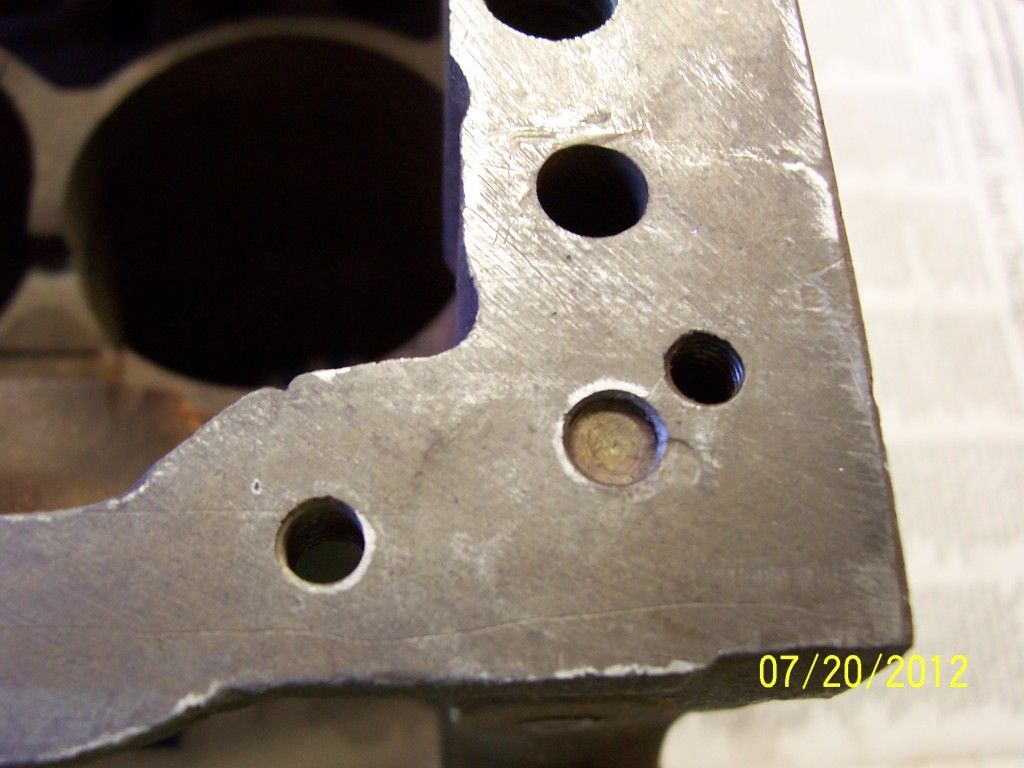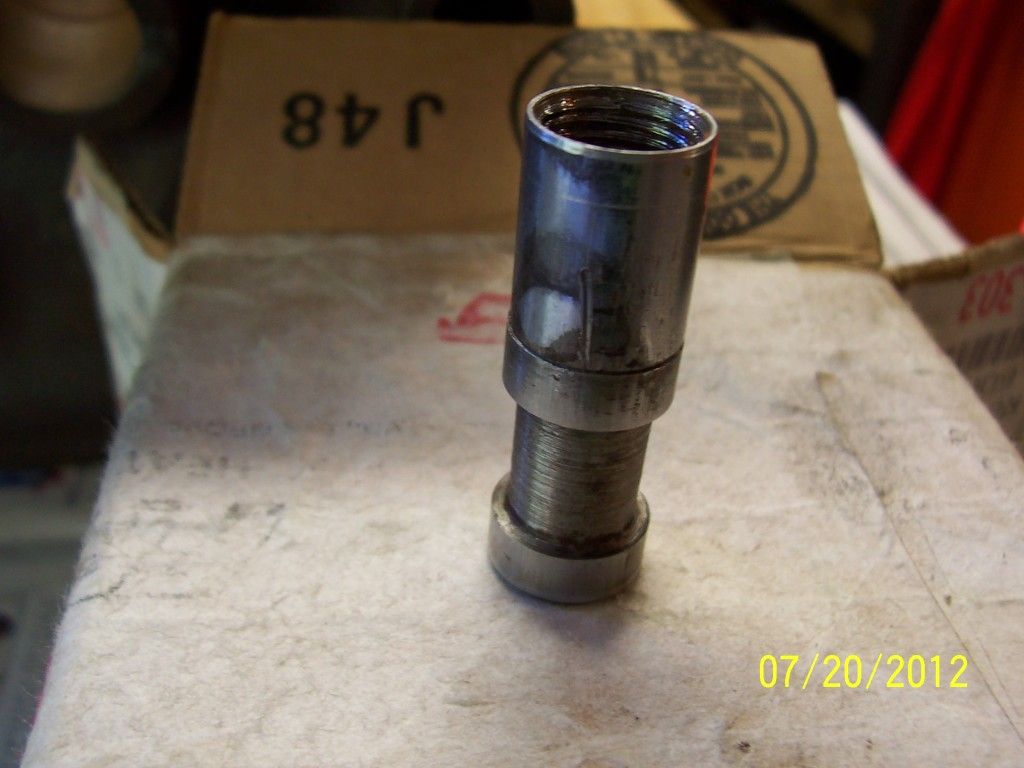BMC Block Cleaning:Midget, et all,
As we discussed during your last foray beneath the Cheddar Curtain, thorough cleaning of BMC blocks is deceptively difficult.
1 Everybody recognizes the neccessity of removing the main oil gallery brass plugs, but
ALL the plugs to the various oilways should be removed for cleaning. I prefer to tap the block for screw-in plugs to make subsequent cleanings easier, but if the engine is not going to be taken apart a lot (say hot street engine Vs race engine) hammer in plugs are OK.
2 The 2 plugs that get overlooked most often are the 2 for the oil pressure relief valve oilways @ the rear of the block below the oil pressure relief plug. 1 plug on the side & 1 on the oil pan rail. Take a look at the photos below. A lot of bearing killing crud can be trapped in these 2 passages.


3 I think that everybody removes the oil pressure relief shuttle from under its' threaded cap, (shuttle shown on the left)

but I have found that most people are unaware of the "spool" that the shuttle seats against. (Spool shown on the right.) The shuttle seats on the spool, as shown below:

The spool, which is pressed into the block,
MUST be removed for thorough cleaning. (Especially if you have done any machining.) Removing the spool is easier said than done, because of the press fit into the block. The method I use to remove the spool is to:
A Tap the spool 3/8 UNC. You only need to tap 3/4 threads deep.
B Firmly install a 3/8 UNC bolt into the threads you just cut.
C Grasp bolt with a slide hammer and gently tap out spool.
There are various other methods that will work to remove the spool, such as "jacking" the spool out with a bolt & washers, etc.
Once you have the spool removed, you may be suprised how much bearing killing crud and/or swarf is in that passage...............
I have often removed the brass cam bearing restrictor from the center main bearing area as well, when I prep for cleaning. Both the restrictor & the spool need to be cleaned & re-installed for assembly, or new ones fitted.
Note that the inner vertical oil passage of the block, for oil to flow past the relief shuttle,
MUST REMAIN OPEN. Plugging this passage will prevent oil relief shuttle oil flow to return to the oil pan and render the oil relief and/or pressure adjustment non-functional.
The BMC race engine oil passage modifications that we talked about & I have been using with good success, I will detail in a subsequent post.

Fordboy